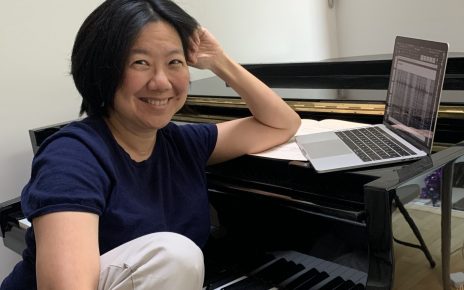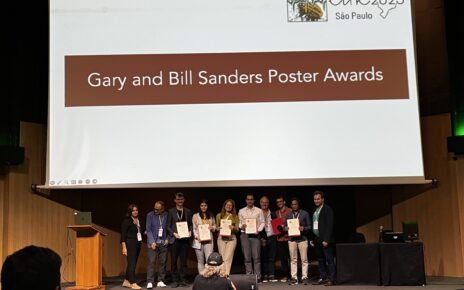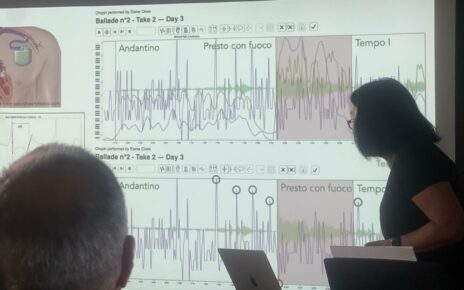Mateusz Soliński wins the Best Poster Award aka the Gary and Bill Sanders Poster Award at Computing in Cardiology 2023 for two posters/papers by Soliński, Courtney Reed and Elaine Chew. The conference, in its 50th iteration this year, was hosted by Georgia Institute of Technology and Emory University in Atlanta, Georgia, 1-4 October 2023.
The papers are based on (1) time delay stability networks of beat-to-beat heart intervals; and, (2) triangle simplex plots of heart rate variability measures of ECG data collected from a piano trio – Hilary Sturt, Ian Pressland, Chew – rehearsing Schubert’s Trio Op.100, Andante con moto and a listener (Soliński). The software for data collection was developed by Charles Picasso.
Friends relay the exciting news as we check in at the Hartsfield-Jackson Atlanta International Airport and Mateusz promptly loses the posters. Luckily, airport security did not blow up the abandoned poster tube before it was retrieved.
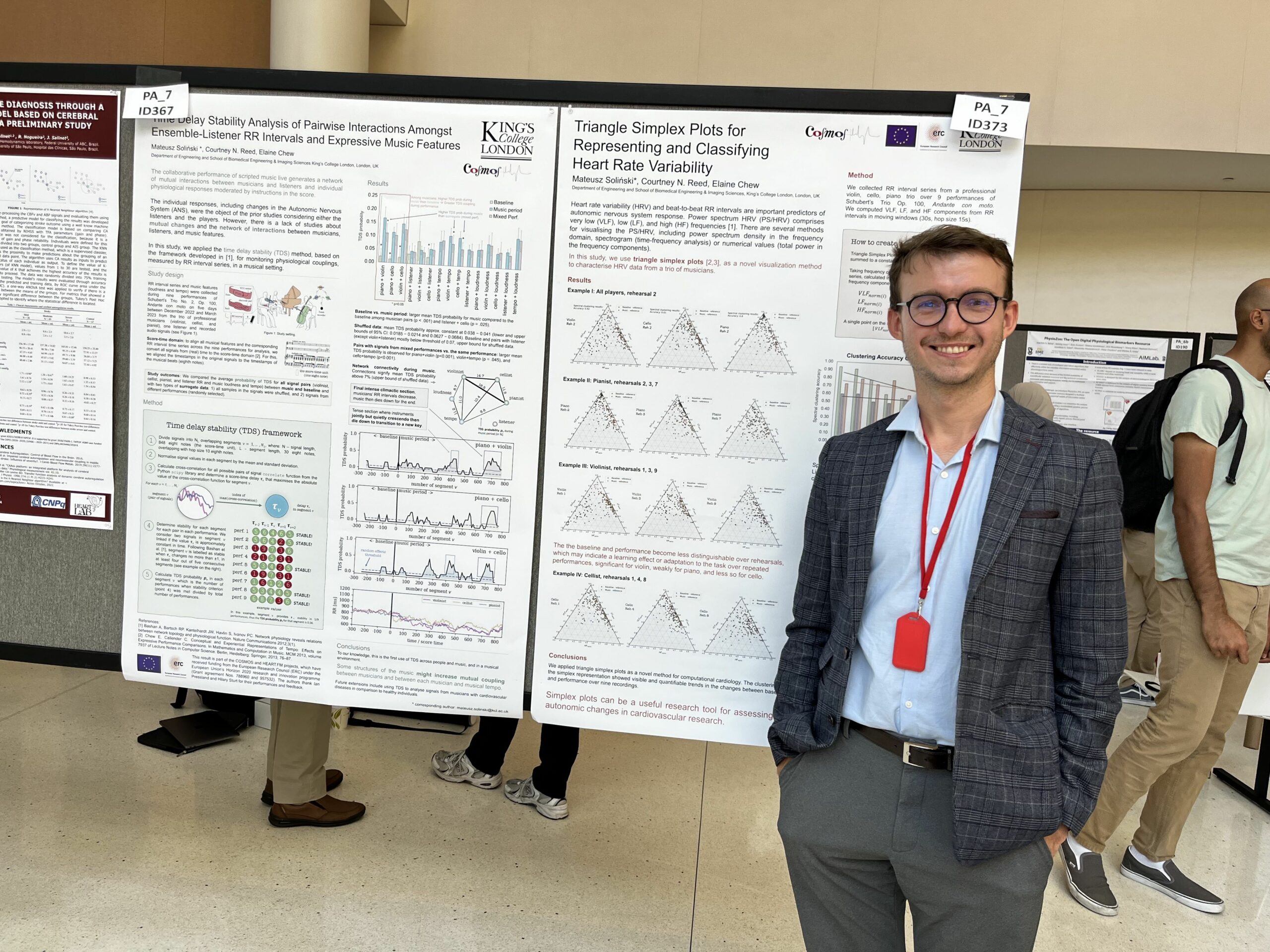
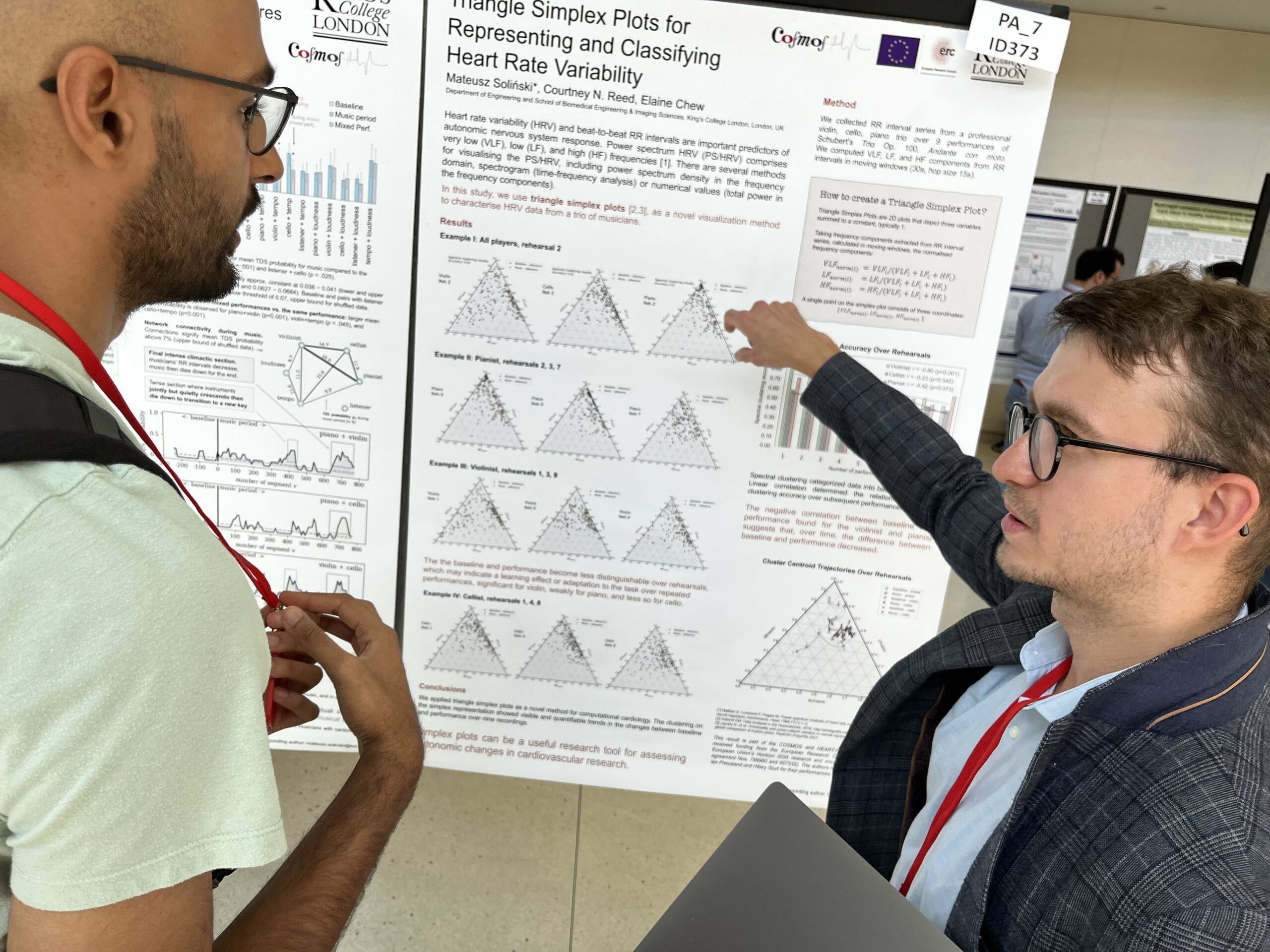

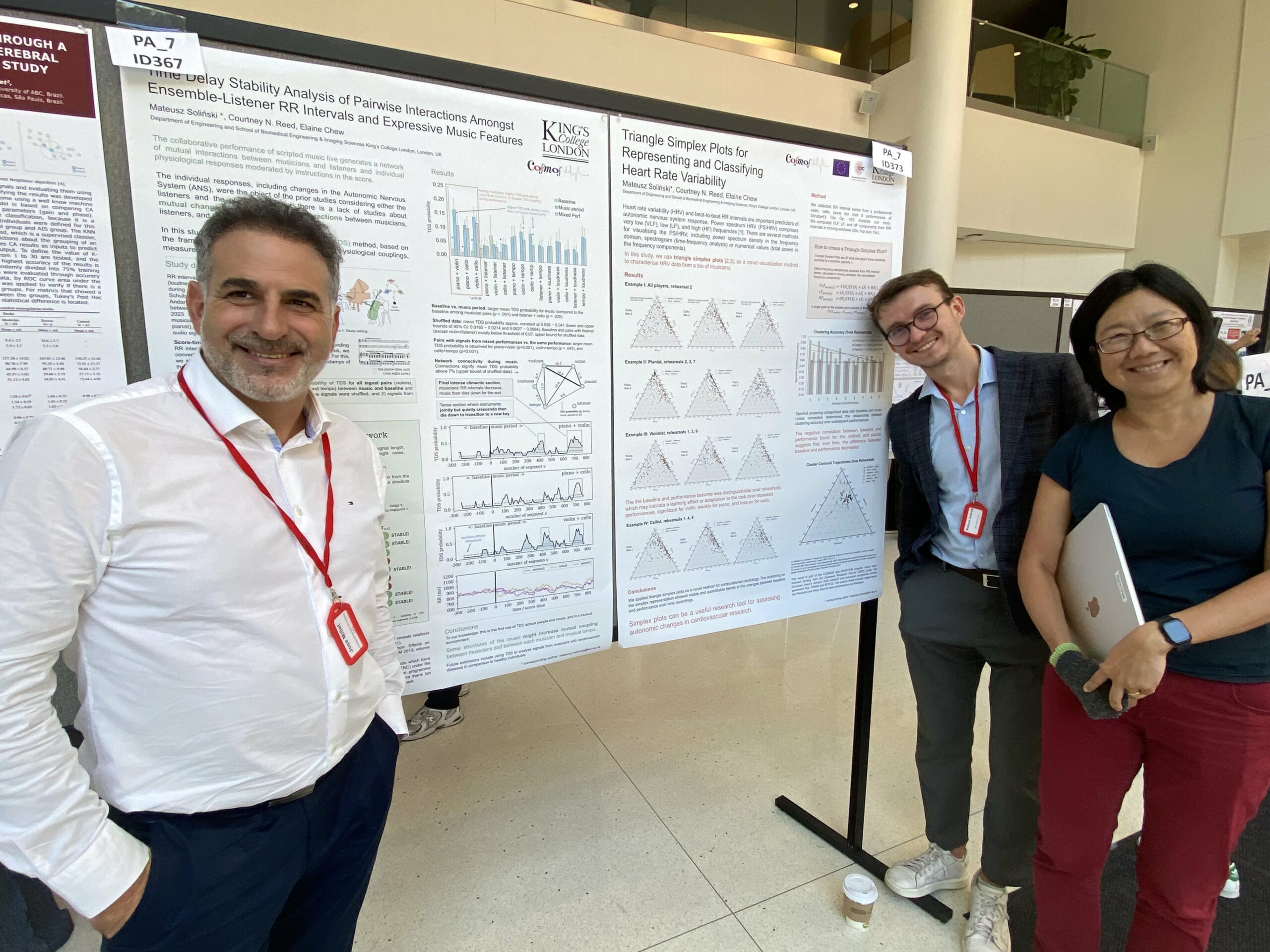
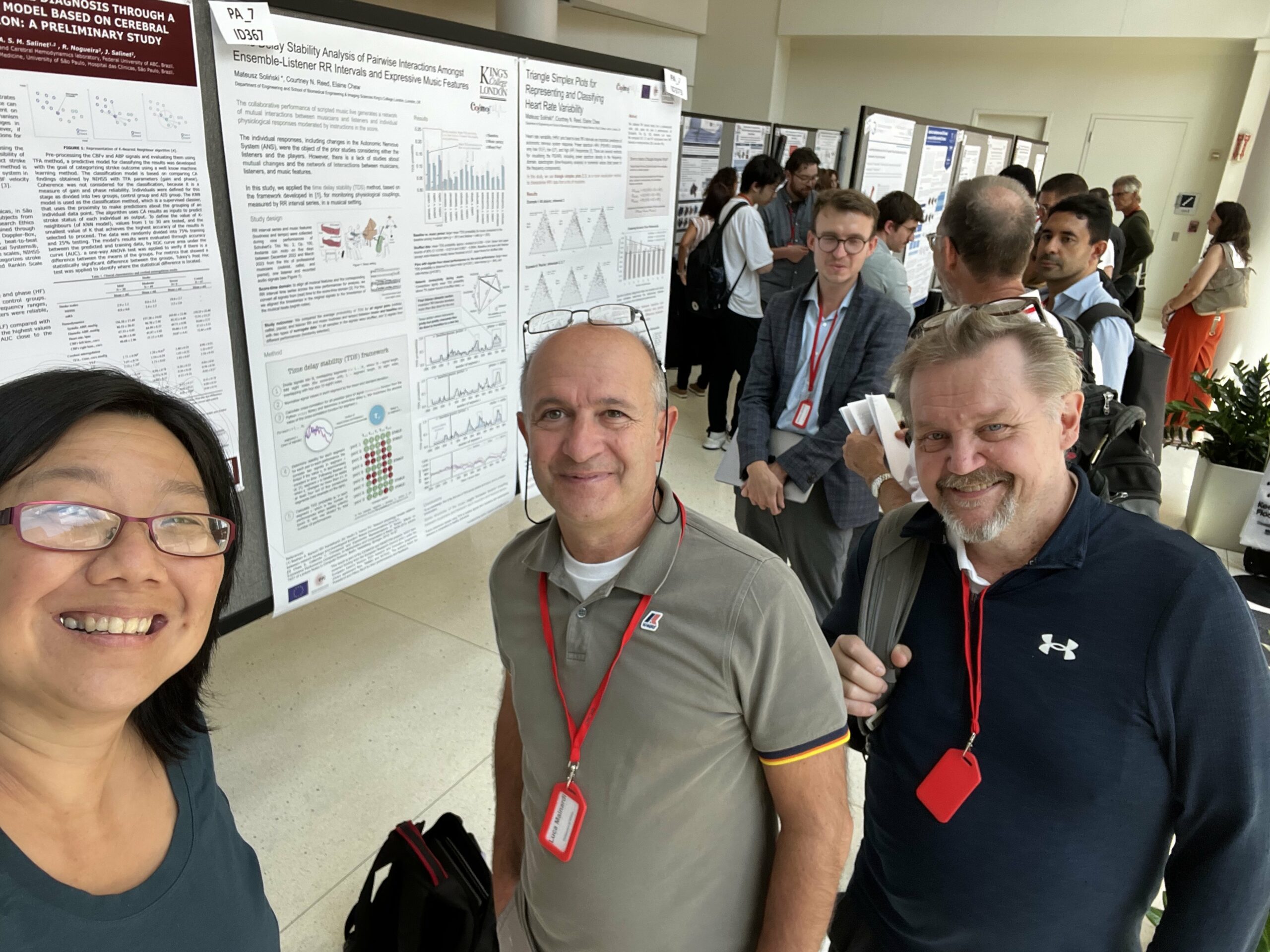


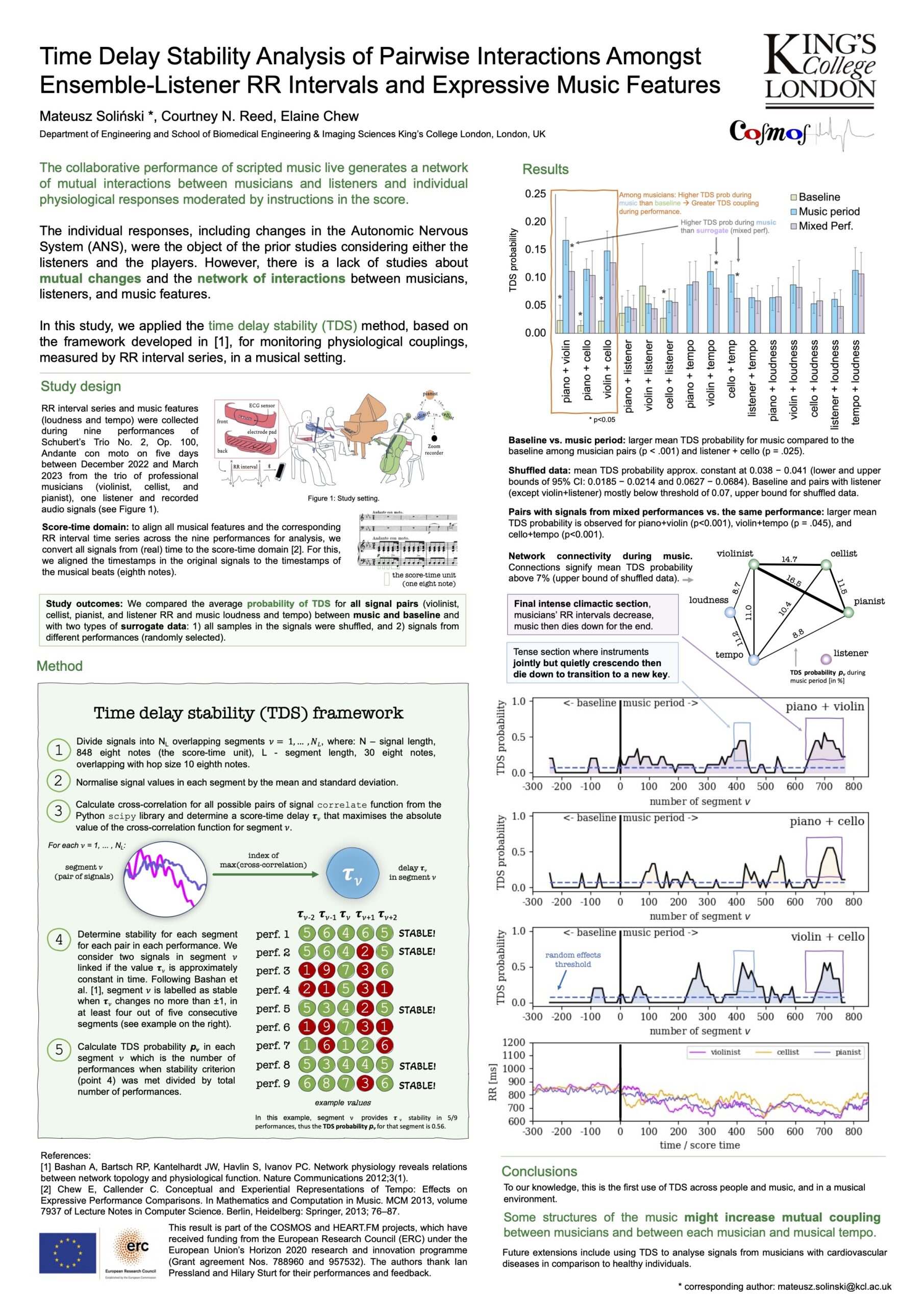
Mateusz Soliński, Courtney N. Reed, Elaine Chew (2023). Time Delay Stability Analysis of Pairwise Interactions Amongst Ensemble-Listener RR Intervals and Expressive Music Features. In Proceedings of Computing in Cardiology (CinC), Atlanta, Georgia, USA, 1-4 October 2023. [ Paper ][ Poster ]
Abstract: Time Delay Stability (TDS) can reveal physiological function and states in networked organs. Here, we introduce a novel application of TDS to a musical setting to study interactions between RR intervals of ensemble musicians and a listener, and music properties. Three musicians performed a movement from Schubert’s Trio Op. 100 nine times in the company of one listener. Their RR intervals were collected during baseline (5 min, silence) and performances (∼10 min each). Loudness and tempo were extracted from recorded music audio. Regions of stable optimal time delay were identified during baseline and music, shuffled data, and data pairs from incongruent recordings. Bootstrapping was employed to obtain mean TDS probabilities (calculated based on all performances). A significant difference in mean TDS probability between music and baseline is observed for all musician pairs (p < .001) and for cello-listener (p = .025); mean TDS probability being greater during music. A significant decrease in mean TDS probability was observed for piano-violin (p < .001), violin-tempo (p = .045), and cello-tempo (p < .001) for incongruent pairs. The highest inter-musician TDS probabilities were observed in musically tense sections: the final climax before the music dies down for the ending and mid piece in a suspenseful swell. This framework offers a promising way to track dynamic RR interval interactions between people engaged in a shared activity, and, in this musical activity, between the people and music properties.
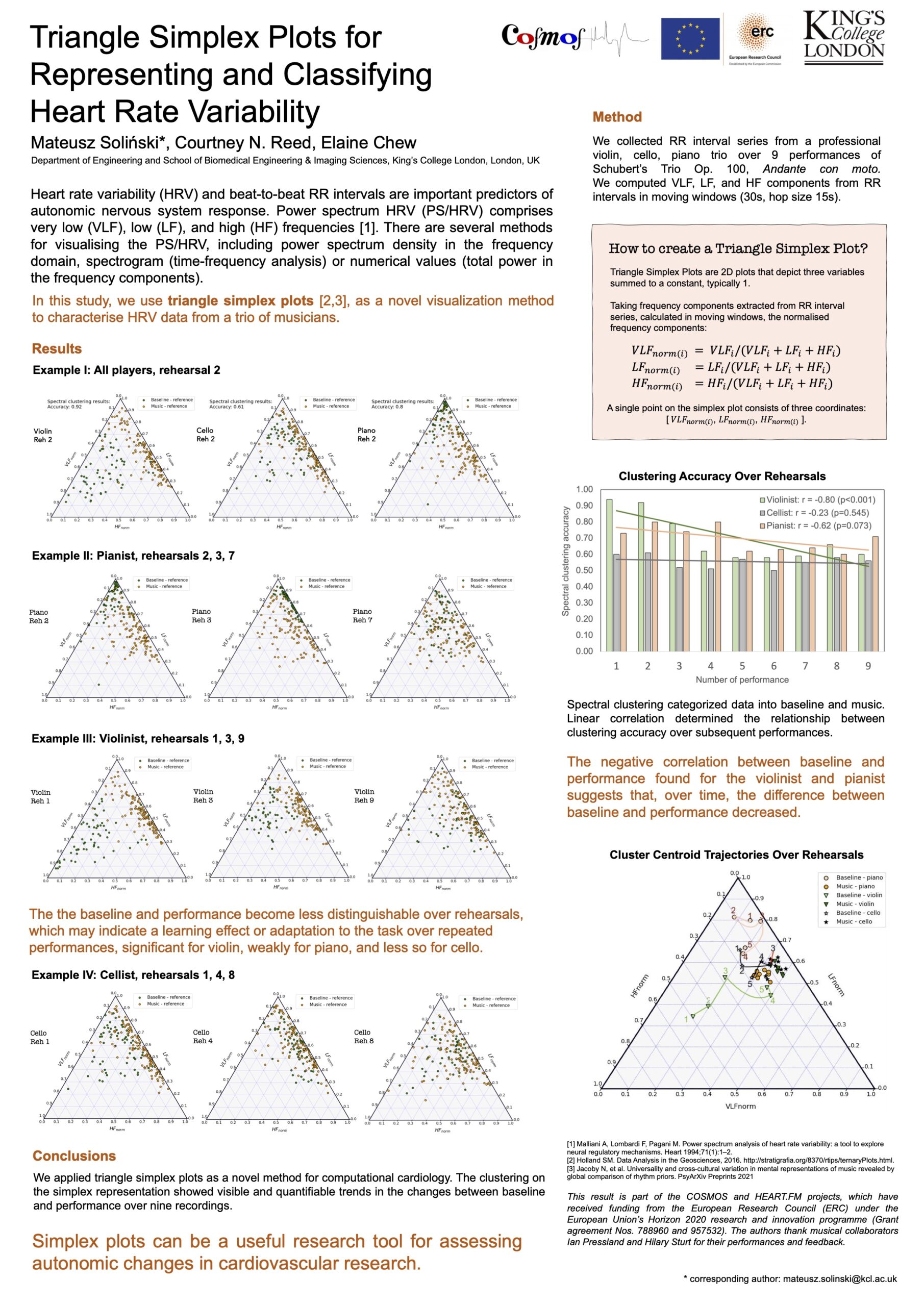
Mateusz Soliński, Courtney N. Reed, Elaine Chew (2023). Triangle Simplex Plots for Representing and Classifying Heart Rate Variability. In Proceedings of Computing in Cardiology (CinC), Atlanta, Georgia, USA, 1-4 October 2023. [ Paper ][ Poster ]
Abstract: Simplex plots afford barycentric mapping and visualisation of the ratio of three variables, summed to a constant, as positions in an equilateral triangle (2-simplex); for instance, time distribution in three-interval musical rhythms. We propose a novel use of simplex plots to visualise the balance of autonomic variables and classification of autonomic states during baseline and music performance. RR interval series extracted from electrocardiographic (ECG) traces were collected from a musical trio (pianist, violinist, cellist) in a baseline (5 min) and music performance (∼10 min) condition. Schubert’s Trio Op. 100, Andante con moto was performed in nine rehearsal sessions over five days. Each RR interval series’ very low (VLF), low (LF), and high (HF) frequency component power values, calculated in 30 sec windows (hop size 15 sec), were normalised to 1 and visualised in triangle simplex plots. Spectral clustering was used to cluster data points for baseline and music conditions. We correlated the accuracy between the clustered and true values. Strong negative correlation was observed for the violinist (r = –0.80, p ≤ .01, accuracy range: [0.64, 0.94]) and pianist (r = –0.62, p = .073, [0.64, 0.80]), suggesting adaptation of their cardiac response (reduction between baseline and performance) over the performances; a weakly negative, non-significant correlation was observed for the cellist (r = –0.23, p = .545, [0.50, 0.61]), indicating similarity between baseline and performance over time. Using simplex plots, we were able to effectively represent VLF, LF and HF ratios and track changes in autonomic response over a series of music rehearsals to observe autonomic states and changes over time.



